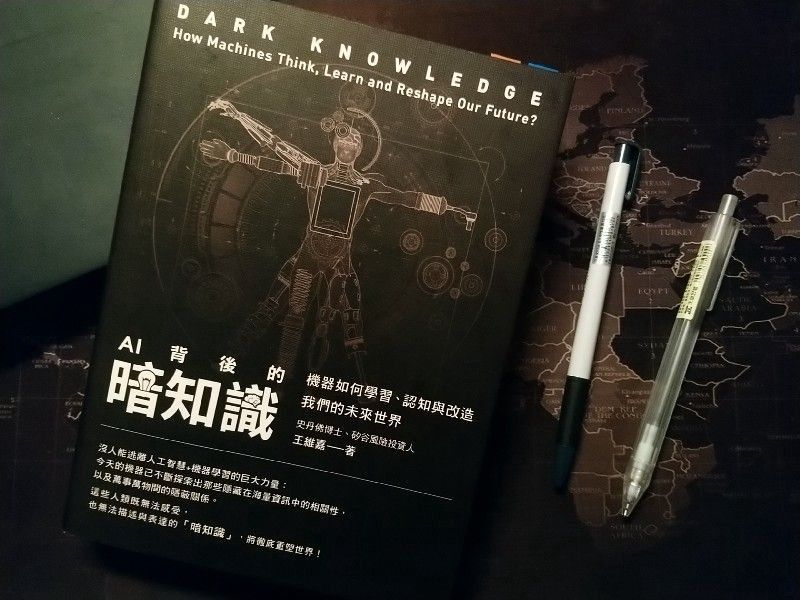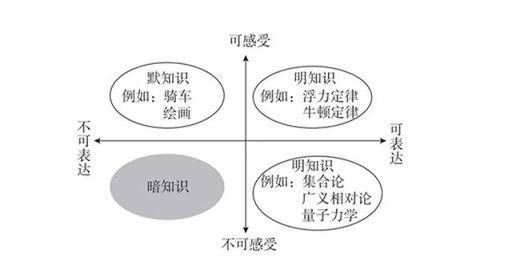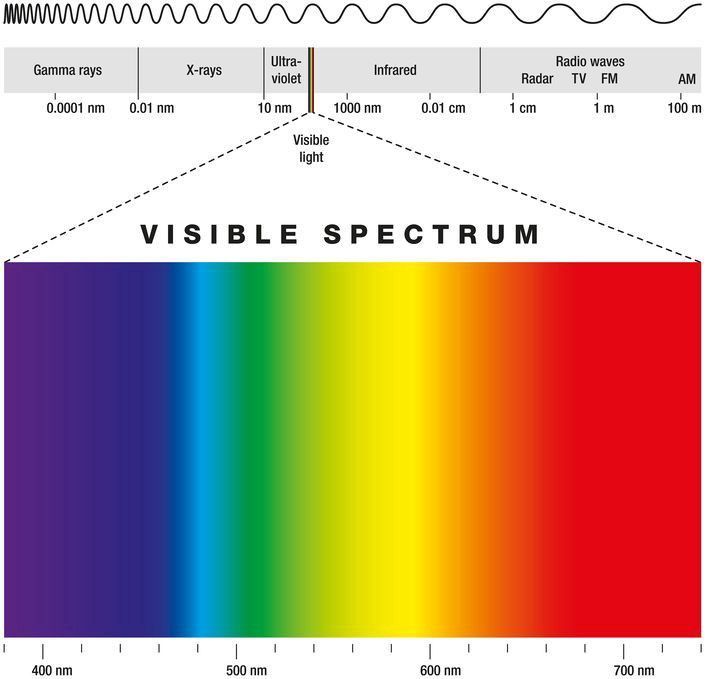📚📑📝: "The Dark Knowledge Behind AI" | Can humans think about how machines think?

In the 21st century with the advent of 5G, this problem is still haunting us for a long time
Can machines think?
Immediately after it is a series of hostility and fear of artificial intelligence "Will machines take away human jobs?", "Is artificial intelligence possible to replace humans?". From British computer scientist Alan. Alan Turing mentioned in his paper "Computing Machines and Intelligence"
- "Can Machines Think?"
Since 1950, this question has sounded the bell of the debate between the human brain and the machine brain. In the long history of 70 years, scholars in various fields have been trying to answer this question; Turing's idea in those years set off computer science, brain The fetters between neuroscience, psychology, physics, anthropology and even philosophy have also made this issue out of the academic ivory tower and become a debate movement discussed by the whole people. The book "Dark Knowledge Behind AI" is the first time to describe the operation of machines with "dark knowledge" , thinking about machines from a perspective beyond human beings; we can try to start this debate from this question:
Can humans think about how machines think?
Chinese Room
When thinking about a new technology, we often use the objects around us or our own experience to assist us; when discussing whether machines can think, the most direct thing we can think of is to start from ourselves, "How do humans think?" In 1980, the American philosopher John. Searle ( John R. Searle ) proposed a thought experiment of "Chinese Room" based on human experience. The experimental process of the Chinese room can be described as follows:
A man who knows no Chinese and speaks only English is locked in a closed room with only one opening. There is a manual in English in the room, instructing what to do with incoming Chinese messages and how to respond accordingly in Chinese. People outside the room kept advancing questions written in Chinese into the room. The people in the room followed the instructions in the manual, looked for suitable instructions, combined the corresponding Chinese characters into answers to the questions, and handed the answers out of the room.
In the above process, the role of the person outside the room is equivalent to the programmer , the person in the room is equivalent to the computer , and the manual is equivalent to the computer program : every time the person outside the room gives an input, the person inside the room gives an answer according to the manual (output). And just as it is impossible for the person in the room to understand Chinese through a manual, it is impossible for a computer to gain comprehension through a program. Hiller's idea is based on the thesis that "human thinking is accompanied by consciousness and has a purpose". The machine only performs input/output operations, so just repeating what we need it to do is not really able to think. .
In fact, this " do as you are told " command comes up a lot in life. A soldier obeys the commander's order, even if he doesn't understand the meaning of the command, he can still carry out the commander's command; students who recite a lot of poetry and songs and apply them in the exam, even if they don't understand the artistic conception of these literary works, can still take the national language exam. to the score. Purely "mechanical" repetition is not really understanding the meaning behind the action.
However, there are some problems with this kind of thinking. In the experiment in the Chinese room, it is not reasonable for Hiller to think of machines as humans; once we take humans as the premise, we will start from the perspective of humans, not from the standpoint of machines. Think about "whether machines can think". What we should think about is how machines receive, process, analyze, and output information , which is what the author advocates to think about machines with dark knowledge.
╴
Dark knowledge beyond human reach

In the past knowledge system, human knowledge is mainly divided into two categories
- Tacit knowledge
- explicit knowledge
These two types correspond to "tacit knowledge" and "explicit knowledge" in the above chart respectively. Tacit knowledge is the knowledge accumulated by human beings through experience, which may not necessarily be expressed in language (such as swimming, fitness, language sense); explicit knowledge is also knowledge that human beings can perceive, but this type of knowledge can be transmitted and analyzed in language ( For example, calculus, probability and statistics, Newton's three laws of motion). However, there will be a classification under the knowledge system divided by perception and expression, that is , dark knowledge that cannot be perceived or expressed .
In fact, dark knowledge is very common in life. The hearing range of dogs is 15~50,000 Hz, while the audio range that humans can hear is generally 20~20,000 Hz. Sounds beyond the audio that humans can receive are dark knowledge that we can neither perceive nor express; To analyze a dog's hearing range from the perspective of dark knowledge is the real understanding. Otherwise, if it is from a human perspective, it will exceed the scope of our understanding, and it is rash to think that a dog's hearing is no different from that of a human.
Teacher Wang Weijia emphasized that we must analyze machines at the level of dark knowledge, otherwise, thinking about machines from a human perspective will always be high in the sky. So, what kind of knowledge do machines have that humans cannot? I cite three examples mentioned in the book:
- super senses
- digitized data
- Fast and precise delivery
╴
super senses
This is best understood by illustrating it with a spectrum. Humans have limited senses, but machines can sense the range of colors that humans cannot detect and observe; the picture below shows the currently known spectrum. What can be found is that a small segment of the rainbow in the middle is the "visible spectrum". , and that's the only color range that humans can observe. Waves of other wavelengths can only be measured indirectly by machines, and humans can only observe them indirectly.

.
digitized data
The most direct feeling of human beings about temperature is cold and heat; it is indeed a big problem for us to tell how many degrees Celsius it is. But today if we use an infrared thermal sensor (thermal imager), the temperature can be seen at a glance, and the error can be up to two decimal places without a problem.

Therefore, temperature is only a physical difference between hot and cold for us; but for a machine, it is one data after another, and it is also the machine that can analyze these data and crawl the correlation with each other.
.
Fast and precise delivery
Through the research of neuroscientists, the human brain has at least 100 billion neurons, which transmit and receive information at the speed of milliseconds. Even if the current machine is constructed with a "neural-like network", it has not yet reached such a complex and dense distribution of neurons in the human brain."
However, this does not mean that we have won the machine. If we are talking about "transmission speed" today, then I am afraid that humans will have to look back. The transmission speed of the machine is more precise and faster than the human brain, and the data is transmitted between each other by only nanoseconds ! Therefore, in order to obtain the latest stock trading information, many American stock exchanges are competing for nanoseconds; this is also known as "dark pool trading" later.

╴
We can use dimensions to understand the difference between us and machines. High-dimensional creatures can understand the world view of lower dimensions than themselves. However, low-dimensional creatures cannot understand the high-dimensional world; like two-dimensional plane graphics, they cannot show the thickness and depth of three-dimensional space.

Like a god-view game like Dying Light, the characters in the game are always moving in various planes, but the player who controls it can see the location of the enemy at a glance and find the best path. And the dark knowledge that separates us from machines is what gives machines the ability to see from God's perspective. No matter how hard humans try, they can only catch up.
Like my work? Don't forget to support and clap, let me know that you are with me on the road of creation. Keep this enthusiasm together!

- Author
- More